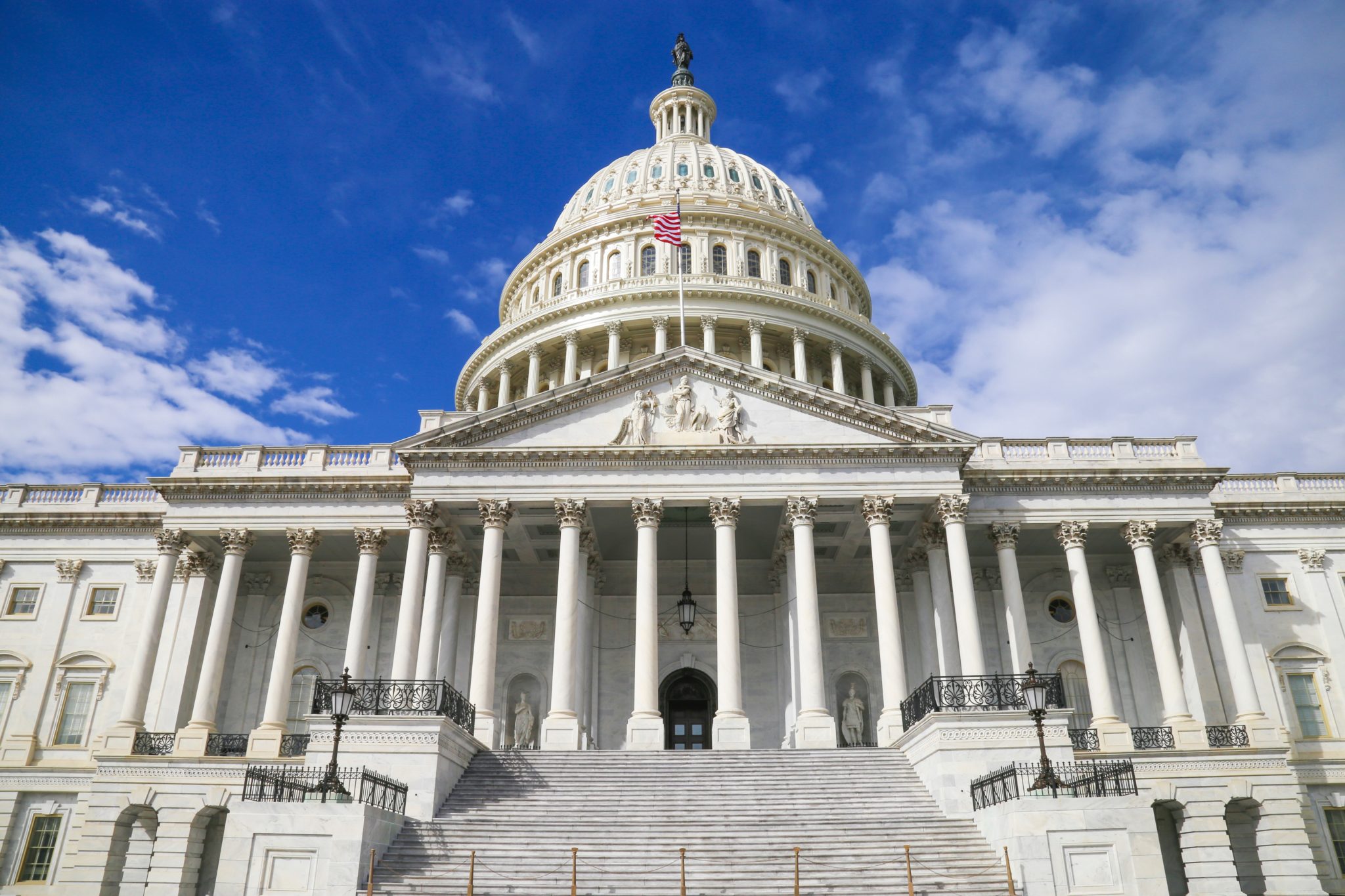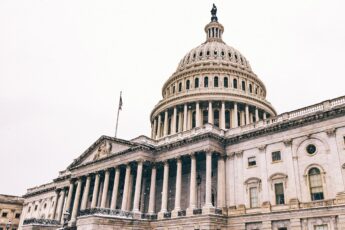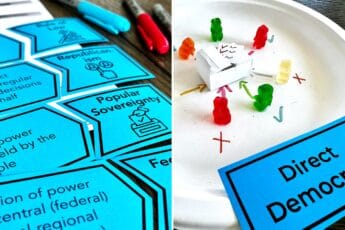Whether it is to kick off your Civics course, build up to Election Day, or deliver as a stand-alone exercise, “political parties and their different ideologies” is a must-cover topic for your Civics and American Government class.
Year after year, no matter if it is a big presidential election year or an “off” year, my students come in with only very general and “sound bite-y” information, usually only about our top two political parties. Only a few will know anything about third parties.
While party affiliation is increasingly not required to vote in most states’ primary elections and Independents have been making up the largest “party” for the last decade, there is no denying its stronghold over our American election and political systems.
Because our two-party system dominates our government so much, comes with so much backstory, and creates so much daily divisive arguing, it can be hard to break it all down into a nice 55-minute framework.
I dedicate a few class periods to the topic because, even though our state is one of those that doesn’t ask for an affiliation upon voter registration, I feel like this is one of those topics that if my students understood it a little better it would really help them be more engaged citizens and future voters.
If my students leave my Civics class with anything, I want it to be excited about voting.
By diving at least a little bit into party platforms and their differences, students will see how issues and positions are much deeper than memes and sound bites, as well as (hopefully!) be more open to listening to people of various parties and exploring third party candidates.
It usually takes week or so to complete these activities, but some can be made into homework if you are short on time.
If you want your own copy of this lesson series, which is part of a 2-week mini PBL unit, simply scroll to the bottom to grab a copy for yourself! Or click the button below!
Let’s get started!
Hook: What Do You Think You Know?
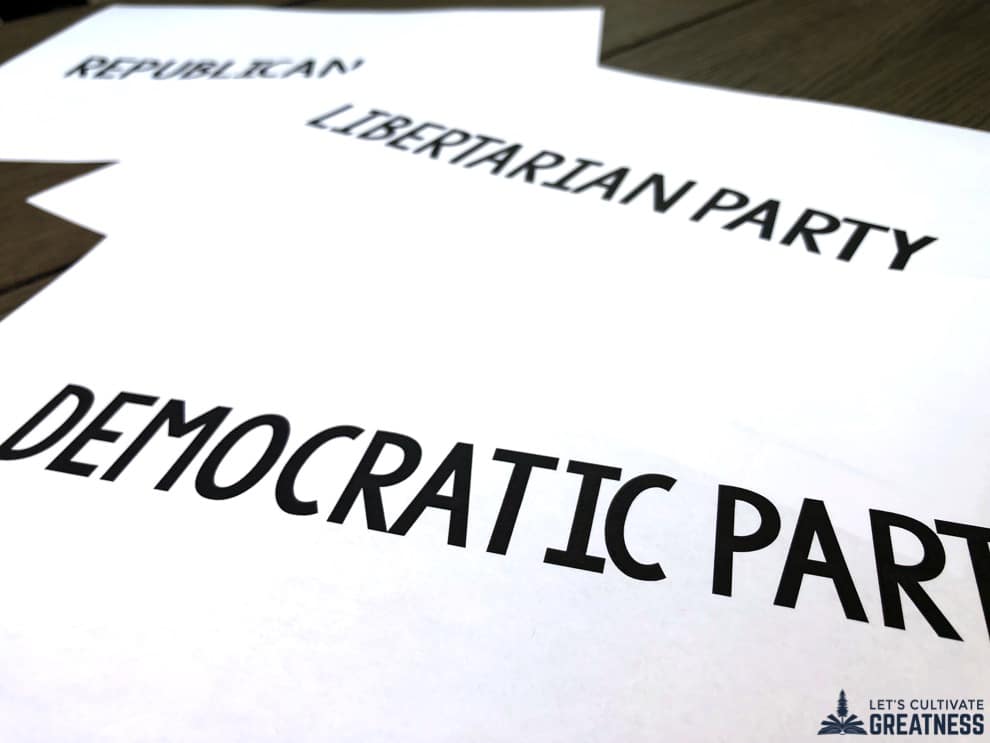
The opening activity involves sheets of paper with various political parties on them. I chose to cover five: Constitution, Democratic, Green, Libertarian, and Republican parties. Working in small groups, students brainstorm and jot down what they think they know about each, rotating sheets. Anything is welcomed.
Activity 1: The Preambles
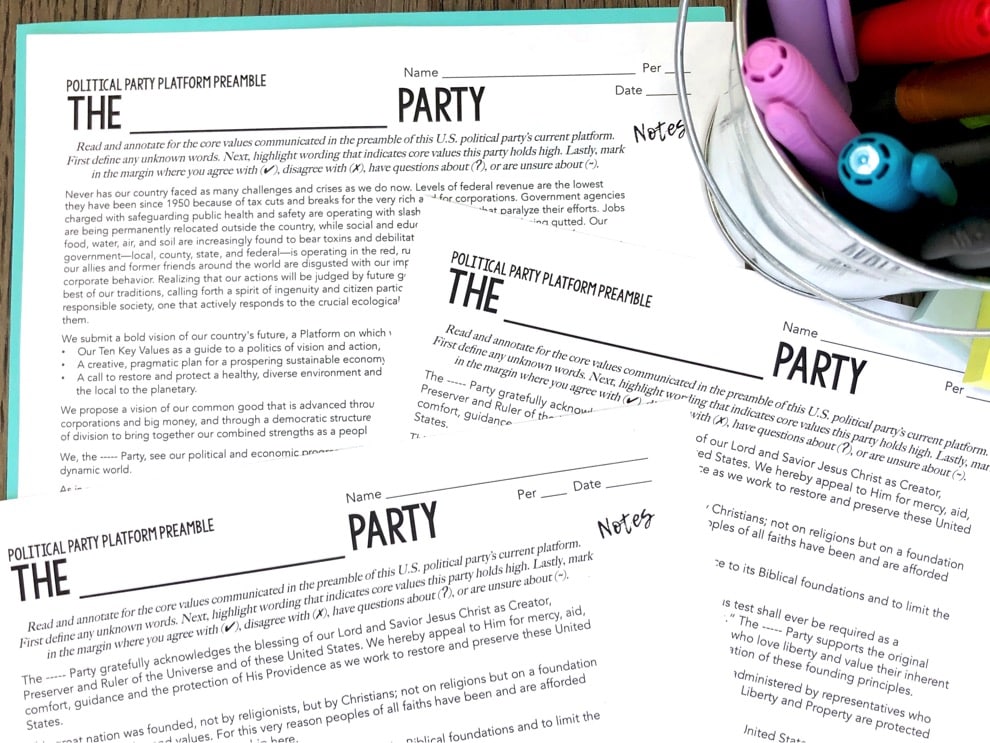
Students are randomly handed one of the five parties’ platform preamble to read. The trick is that I have removed all obvious identifying information, like their name (which actually appears a lot in each of them!). I think it’s important for my students to really have to read the words, rather than skim over, because they think they already know what each party is going to say. I have my students annotate, agreeing and disagreeing with each item. Then, they group up with those who had the same party preamble as them, collectively deciding on the top three ideas that party is declaring. Students write them on those brainstorm sheets in a colored marker and share out to the rest of the class, comparing with what they originally thought about each party.
Activity 2: Platform Issue Research
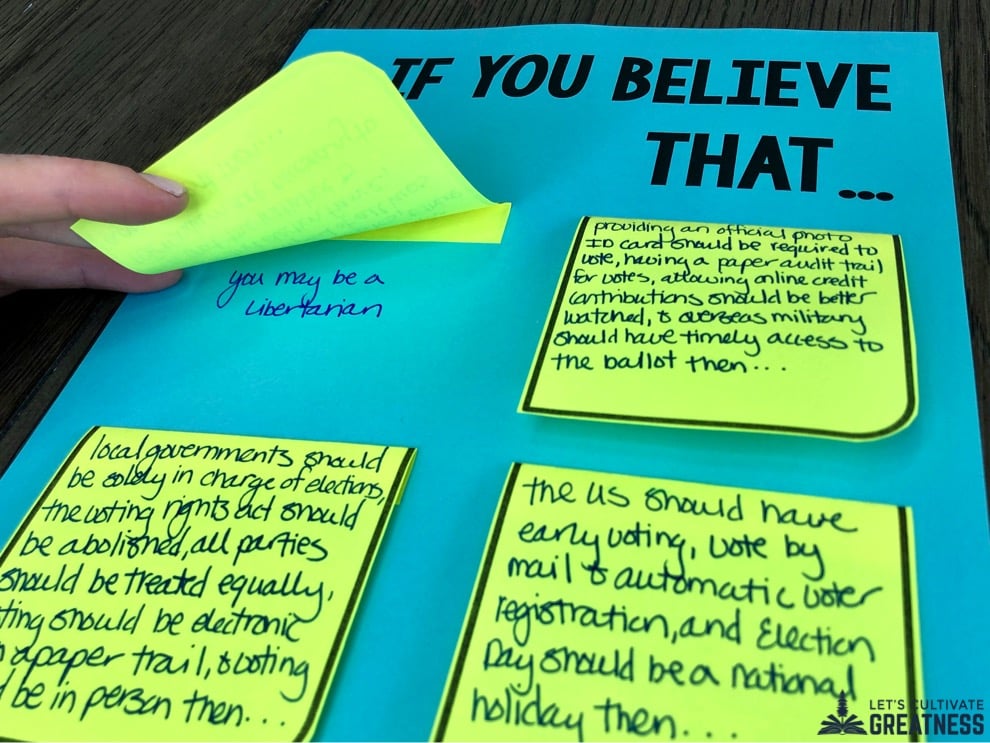
Next, students get one of several issues at random. Things like energy or education or gun rights. They are tasked with exploring each of the five parties’ platforms for what each specifically believes and what policies they suggest. Have them create a poster or one-pager of their findings.
Activity 3: Party Ideology Quiz Gallery Walk
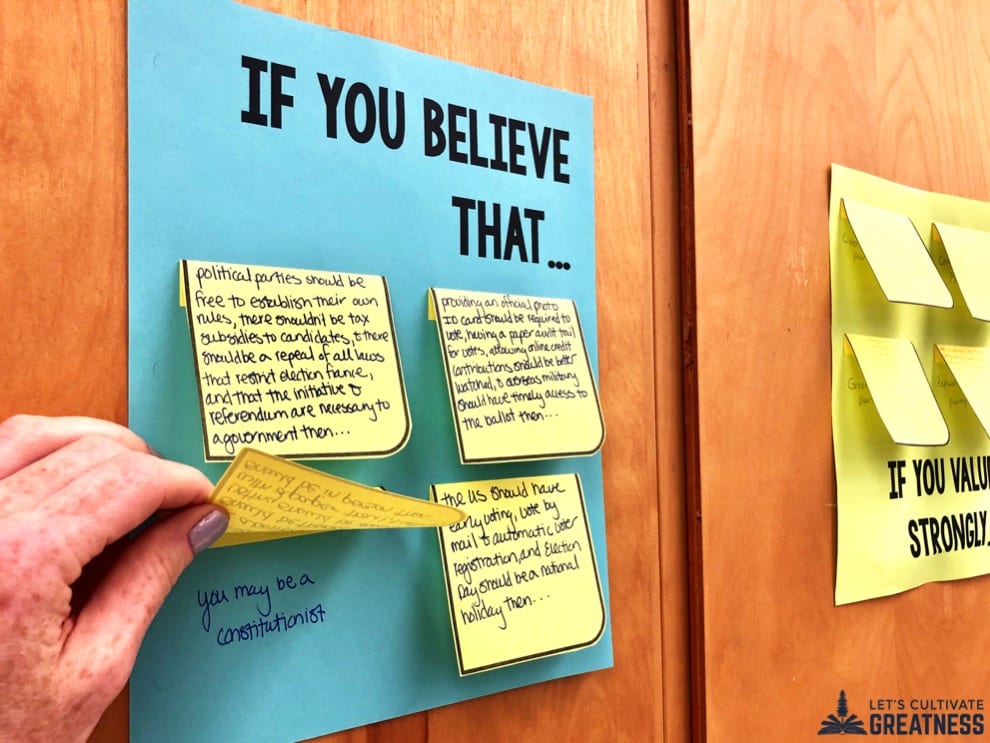
After all the posters have been turned in, have students utilize each other’s posters to not only learn several different perspectives and policy ideas, but to challenge themselves to become more familiar with what each party stands for and how they differ from each other.
Afterwards, have students make general conclusions about each party’s platforms and their own level of affiliation to each party.
Optional Extension: Current Issue Research
Equipped with general differences on various issues, students are now able to explore a news story about a current political issue. Find a leveled article on Newsela, pull an article pairing from AllSides, or let your students search for their own. Or you could bring in some political cartoons discussing a partisan issue. I have a fantastic FREE Political Cartoon Kit that would be perfect for that.
Reflect: What Do You Now Know?

Lastly, on the following day so there is 24 hours of mental percolation time, students return one last time to those original brainstorm sheets and add policy ideas and beliefs each party holds on various issues.
I hope these doable lesson ideas help you bring political engagement and interest to your students!
Click below to grab the complete PBL unit kit of these ideas and more!
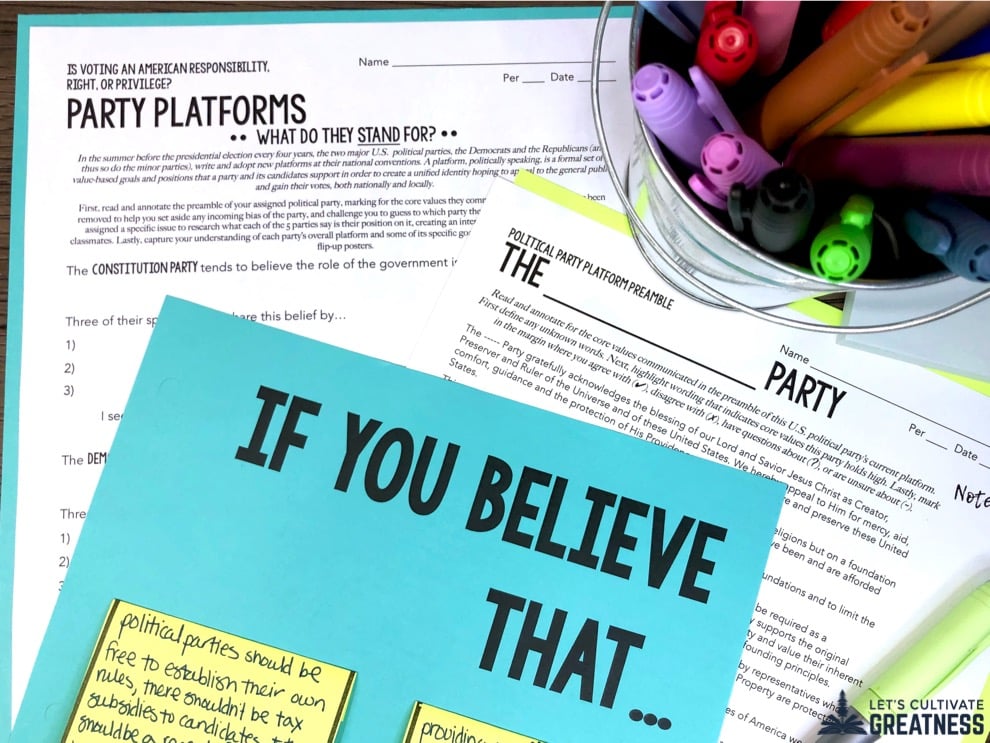
If you are looking for a ready-to-go kit that incorporates all these lesson ideas, I encourage you to check out my Political Party & Candidate Research mini PBL unit!
Feature image photo credit: Louis Velazquez


